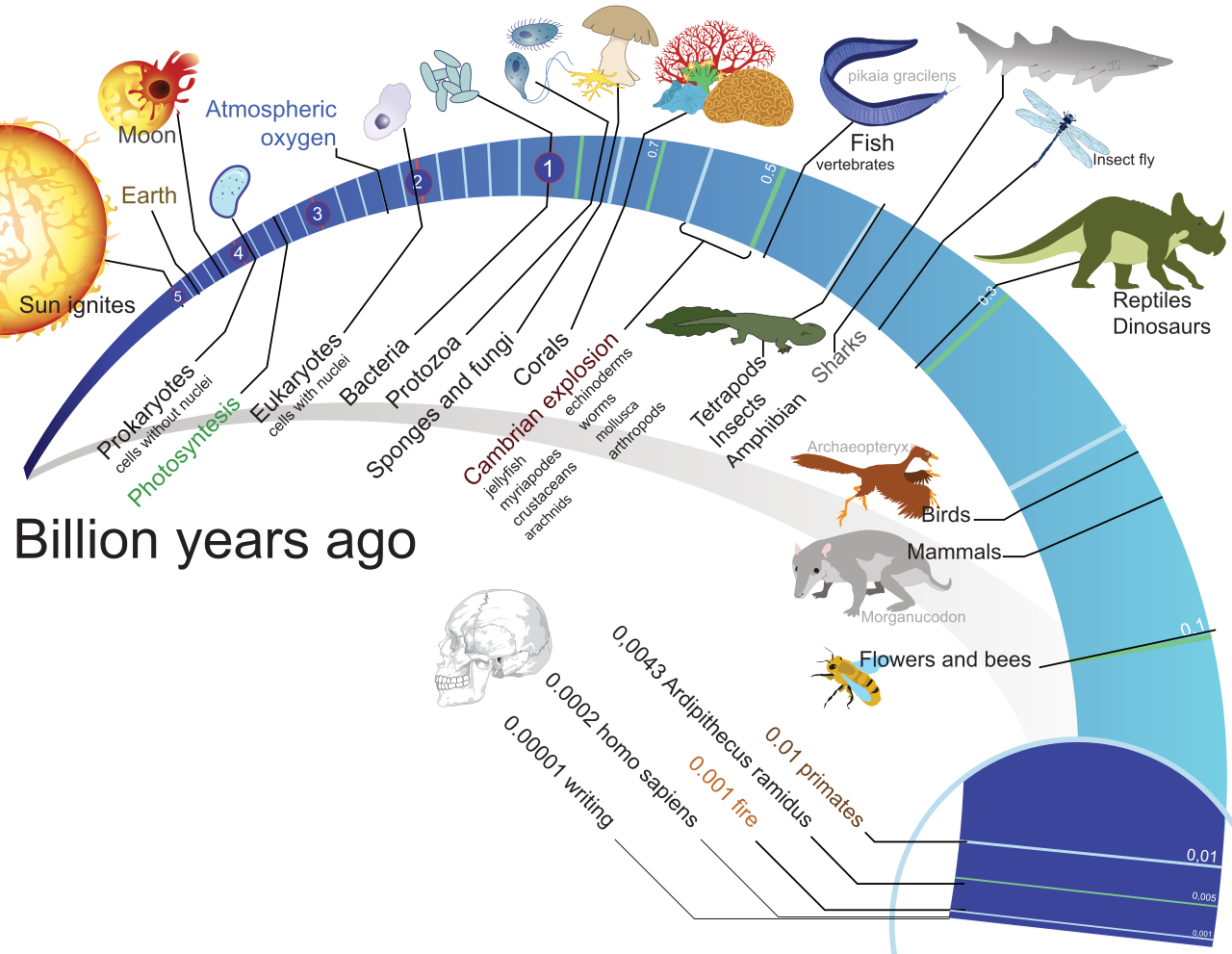This is a biology blog. It's used for an educational purpose and posts will always be life-science related.
Monday, March 21, 2016
Geologic Timeline Reflection
In this assignment, we made a timeline of Earth's history to better understand when and how some major events happened on our planet. We used a strip 10 meters long to represent the 4.6 billion years of Earth's history, where 1 million years was represented by 2 mm. One very significant major event is the creation of Earth itself, which happened 4.6 billion years ago. Nothing as we know it would exist if this collision did not happen to form our planet. The increase of oxygen in the atmosphere and organisms which use oxygen for life processes which happened in the Ordovician is an important event in Earth's history. This laid the foundation for processes such as photosynthesis and respiration, which are essential. The majority of organisms today are descended from these first organisms. The extinction of the dinosaurs was a very significant event in Earth's history as well. It happened during the Mesozoic Era and gave way for mammals to dominate. This paved a path for humans and other mammals to come into existence because the dinosaurs were very dominant at the time and the smaller mammals stood no chance.
In our scale, 1 million years was represented by 2 mm. It was surprising for how much of Earth's history there was no life. Being able to see this visually represented really put so much of history into perspective for me. Before doing this timeline, I knew that the Precambrian Era was 88% of Earth's history but when we scaled our timeline accordingly, I began to really understand how significant a part of history this is.
Humans have made up such a small part of Earth's history, and it is surprising how much they have changed the planet in such an relatively insignificant amount of time. Humans are now the dominant species, but have been around for not even a speck in terms of geologic time.
One question I have is, how significantly have humans changed the planet in relatively small time that they have occupied it?
Subscribe to:
Post Comments (Atom)

No comments:
Post a Comment